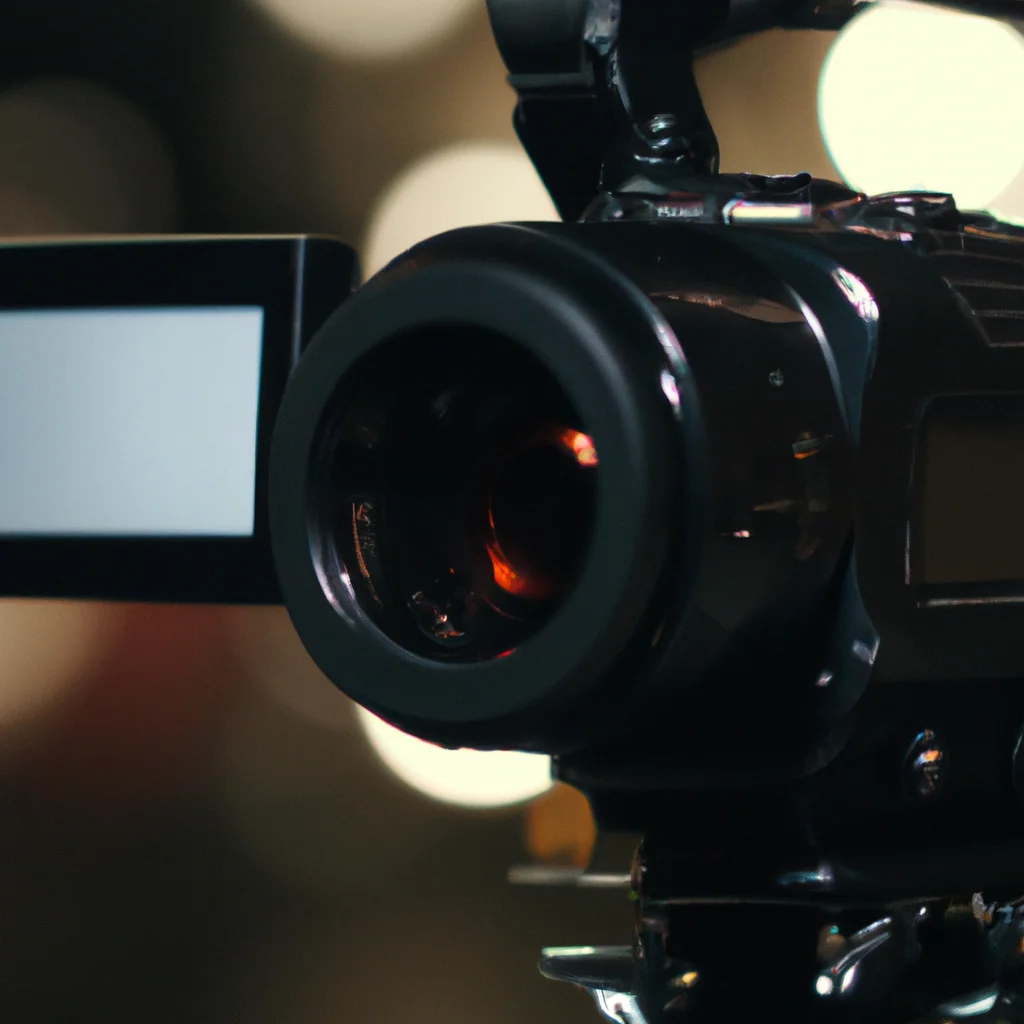How does a camcorder capture and store video?


How does a camcorder capture and store video?
Camcorders have been around for decades and have been instrumental in capturing some of the most iconic moments in history. From news coverage to home videos, camcorders have transformed the way we record and store video. But how exactly does a camcorder capture and store video? In this article, we will explore the various components and processes involved in video recording, storage, and editing.
Capture Video
The first step in recording video is capturing the image. A camcorder uses a lens to capture light and focus it onto an imaging sensor. The size and quality of the imaging sensor determine the video quality. Larger sensors produce better image quality with higher resolution and better low-light performance. Once the light is captured, the sensor converts it into a digital signal that is then processed by the onboard processor. The processor converts the signal into a video file and stores it on an internal or external memory card.
Store Video
The storage capacity of a camcorder is determined by the amount of memory available. Older camcorders used tape cassettes, while newer models use internal flash memory or external memory cards. The larger the memory capacity, the more video footage the camcorder can store. However, larger memory capacity also means larger video file sizes, which can become a problem when transferring or editing the footage.
Video Recording
When recording video, the camcorder captures a series of still images at a set rate (usually 24 or 30 frames per second). These images are then combined to create the illusion of motion. The quality of the video is determined by the resolution and frame rate. The higher the resolution and frame rate, the smoother and more detailed the video will be. However, higher resolution and frame rate also means larger file sizes.
Digital Video
Camcorders record video in digital format, which means the video file is made up of a series of 1s and 0s. This digital format allows for easy storage and sharing of video files. However, digital video files can be large, which can be a problem when transferring or editing the footage.
Video Storage
Video storage is an important consideration when choosing a camcorder. Internal memory is convenient, but it may not be enough if you plan on recording for extended periods. External memory cards can be easily swapped out and offer larger storage capacity. However, make sure your camcorder is compatible with the type of memory card you plan on using.
Video Quality
Video quality is determined by the resolution and frame rate. A higher resolution means a clearer and more detailed image, while a higher frame rate results in smoother motion. However, higher quality video also means larger file sizes, which can be a problem when transferring or editing the footage. It is important to choose a camcorder with the appropriate resolution and frame rate for your needs.
Video File Format
The video file format is another important consideration when choosing a camcorder. Most camcorders use the MP4 file format, which is compatible with most video editing software and media players. However, some camcorders may use proprietary file formats, which can be a problem when sharing or editing the footage. Make sure the file format is compatible with your editing software and media player.
Video Compression
Video compression is the process of reducing the size of a video file without sacrificing quality. Most camcorders use H.264 compression, which offers a good balance between file size and video quality. However, some camcorders may use other compression methods, which can affect the quality of the video. It is important to choose a camcorder with good video compression to ensure high-quality footage without sacrificing storage capacity.
Video Editing
Once you have recorded your footage, you may want to edit it to remove unwanted footage or add special effects. Most video editing software supports MP4 file format, which is the most common file format used by camcorders. However, make sure your editing software is compatible with the video file format and resolution used by your camcorder.
In conclusion, camcorders have come a long way since their inception. They have revolutionized the way we capture and store video footage. Understanding the various components and processes involved in video recording, storage, and editing can help you choose the right camcorder for your needs. Whether you are a professional videographer or a casual user, there is a camcorder out there that can meet your needs.
Recent Posts
How do I create an engaging and informative online quiz or assessment?
Creating an engaging and informative online quiz or assessment can be a powerful tool for… Read More
What are the most effective methods for managing and reducing work-related stress in the hospitality industry?
Work-related stress is a common issue in the hospitality industry, where employees often face long… Read More
How can I improve my assertiveness and communication skills in a leadership position?
In a leadership position, assertiveness and effective communication skills are crucial for success. Being able… Read More
What are the key elements of a successful employee recognition and rewards program?
Employee recognition and rewards programs play a crucial role in motivating and engaging employees, as… Read More
How do I effectively manage and respond to customer feedback and reviews?
Customer feedback and online reviews play a crucial role in shaping a company's reputation and… Read More
What are the best strategies for effective time management as a stay-at-home parent?
Effective time management is crucial for stay-at-home parents who juggle multiple responsibilities on a daily… Read More